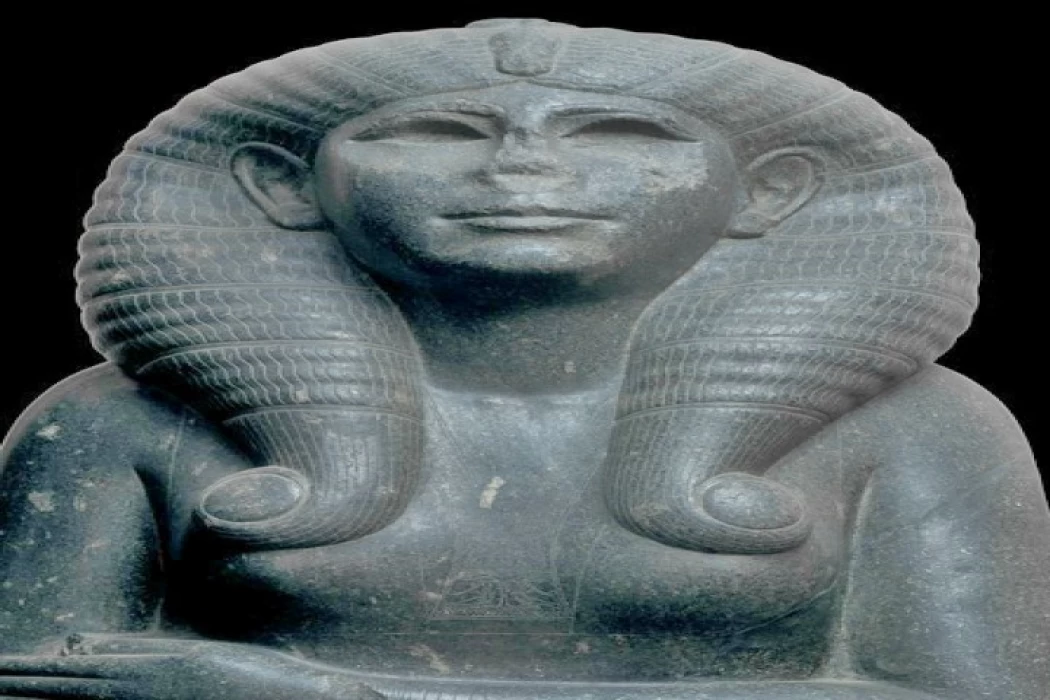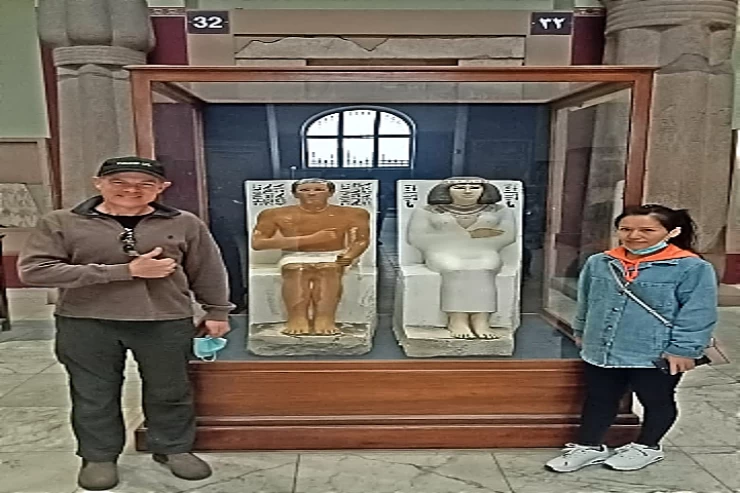
Facts About King Senusret II | 12th Dynasty Middle Kingdom
Kha-Khabar-Ra s-N-wasrt II or sezostris II (1897 BC.M. - 1878 BC.M.) He was the fourth king of the Egyptian Twelfth Dynasty, who succeeded his father, King Amenemhat II, and co-ruled with him during his last years. And who built his pyramid in Lahun? The most characteristic of S-N-Sirte II is his great interest in the Fayoum Oasis area, he began to build a huge irrigation system starting from the sea of Youssef and ending at Lake Morris (the name of Amn-m-hat II in the Greek civilization), by constructing aqueducts in the lahoun area and adding a network of canals to drain irrigation water. This project aimed to increase the area of agricultural land in that area.
Unlike the policies of his successor, s-N-wasrt III, s-N-wasrt II maintained good relations with many of the rulers of the Egyptian provinces who were almost on the same level of wealth as the King. And there are wall drawings in the Tomb of a regional ruler named Khnum-hateb II in the Beni Hassan region, testifying to the works that he completed in his sixth year
Participation in governance
The issue of participation in governance is one of the main issues that has gained the attention of archaeologists in order to understand the history of the Middle Kingdom, especially about the Twelfth Dynasty. The French archaeologist Claude Opsomer completely rejects the possibility of a common rule in the XII dynasty. The author is Robert D. Delia, and the German archaeologist Carl Jansen Winklin studied the works of Claude Opsommer and came to a conclusion in favor of the existence of a common reign period. Jansen-Winklin also cited a stone tablet found in the Konoso area as indisputable evidence in favor of the existence of a common reign between S-N-Sirte II and AMN-m-hat II, and a great proof of the existence of common reigns in the Twelfth Dynasty. And the American archaeologist William J. Murnane has stated that"all the common periods of rule of that era were identified by documents containing double dating". The German archaeologist Schneider concluded that the newly discovered documents and archaeological evidence already prove the existence of common periods of rule in this era. Some sources attribute the period of joint rule to the reign of S-N-wusrat II, where his father AMN-m-hat II was co-ruler with him. The British archaeologist Peter Clayton ascribes to him at least three years of the joint reign of S-N-Sirte II. The French archaeologist Nicolas Grimal assigns to him five years of joint rule before he ascended the throne of Egypt alone.
His reign
The Turin canon is believed to have assigned 19 years to the reign of King s-N-wussert II and 30 years to King s-N-wussert III. However, this traditional view was challenged in 1972 when the American archaeologist William Kelly Simpson noted that the last recorded year of the reign of S-N-Sirte II was the seventh year, and likewise the nineteenth year of King S-N-Sirte III.
King ''s-Sirte II by adding 10 years to the nine years mentioned, which means 19 years. Also, many archaeologists (for example, Thomas Schneid) cite Mark C.'s article. The Stone that was published in Göttinger Miszellen in 1997, which specifies the maximum documented reign year of King s-N-Sirte II is the eighth year, based on the painting displayed in the Cairo Museum under the number JE 59485.
Some scholars prefer to attribute to him only 10 years of Reign, and to allocate nineteen years to King S-N-wassert III instead of him. However, several other Egyptologists such as Jurgen von Beckrath, Frank J. The Yorkists have maintained the traditional view of the long reign of King s-N-wassert II's estimated nineteen years that the level of activity carried out by the King during his reign is needed. Yurco notes that the reduction of the reign of King S-N-Sirte II to 6 years carried many difficulties, as this king had built a complete pyramid in Al-Lahun, complete. The construction of such projects takes a minimum of 15 to 20 years to complete, even taking into account the use of adobe bricks in the construction of the pyramids of the Middle Kingdom.
His interest in agriculture
He took an interest in agriculture, built canals and a large irrigation system from Bahr Yusuf to what would later become Lake Qarun, built aqueducts there to trap and store water during the flood period for later exploitation, and added a drainage network. The goal of his project was to increase the cultivated area. And the exploitation of the Nile flood waters for a longer period. The importance of this project is evidenced by the decision of Senusret II to move the royal necropolis from Dahshur to allahun, where he built his pyramid. Therefore, Lahun became the political capital of Egypt during the twelfth and thirteenth dynasties. The first workers ' village was founded by the pharaoh in the nearby city of Kahun, on the pattern of which the modern state built a city-monastery for craftsmen and artists.
His foreign relations
Unlike those of his successor, Senusret II, maintained good relations with the local rulers and the leaders of the surrounding nomadic tribes, who had reached a high degree of affluence. There is testimony to this from the sixth year of his reign on a fresco from the Tomb of a local ruler in Beni Hassan.
His expeditions to the Western Nubian Desert Senusret II was interested in bringing hard stones from the diorite quarries located in the Western Nubian Desert.















